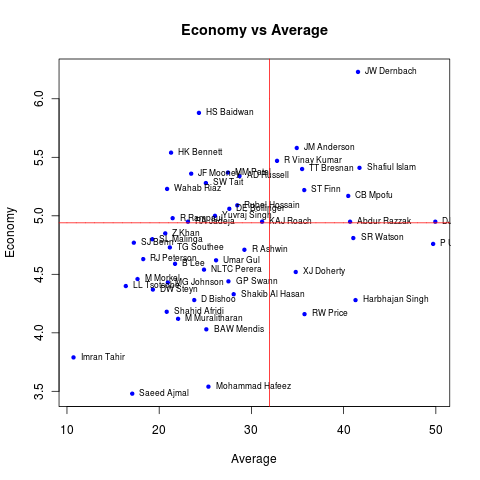After looking at the average batsmen in ODI in the year 2011, we conclude the series on the anatomy of average players by looking at the average ODI bowlers in the year 2011.
Overall, the bowlers in 2011 bowled 75888 deliveries, giving away 62539 runs (this excludes byes and legbyes) and taking 1956 wickets in total. Therefore the “average ODI bowler” has an economy rate of 4.94 runs per over, an average of 31.97 runs per wicket and a strike rate of 38.80 balls per wicket. One bowler that comes close to matching all the three numbers is Kemar Roach: he has an economy rate of 4.95, an average of 31.16 and a strike rate of 37.70. So it is safe to say that Kemar Roach is the protypical “average bowler”.
The graph below shows the top wicket takers of 2011 along the economy versus average axes. As usual, the red lines correspond to the “average” bowler. The top right part of this graph has high average – high economy rate bowlers (unusually dominated by England bowlers), not the kind of bowlers one would like to see in their teams. The bottom left part has the low average – low economy rate bowlers, who can knock out the opposition both by taking wickets as well as choking off the runs. From the graph it is clear that the best bowler in 2011 – by a good distance – was Saeed Ajmal, followed by his compatriot Mohammad Hafeez.

Well, clearly Pakistan has the best bowling attack. And Zaheer and Ashwin are not as good as I used to think.
Comments are closed.